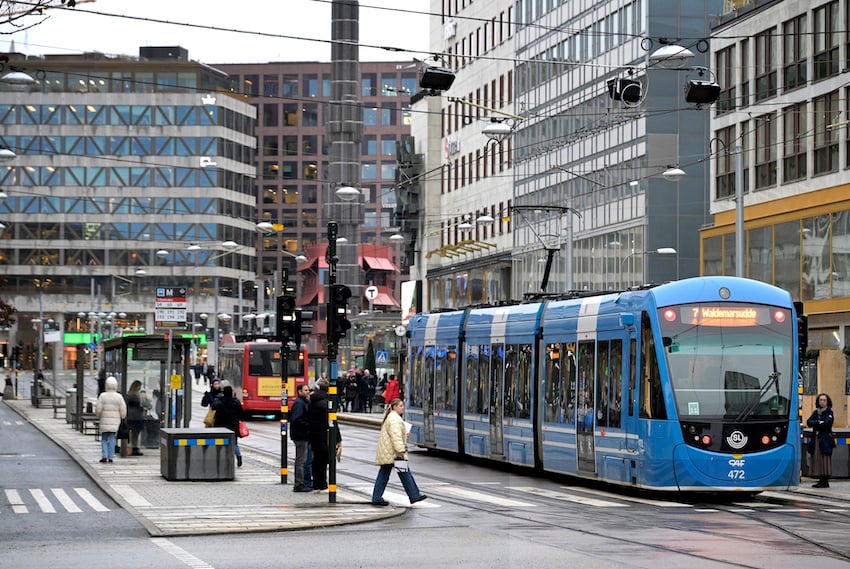Compared to towns and cities back in India, cities in Sweden can seem almost emptied of people, something that can take getting used to, reported one reader living in Jönköping.
“It is so quiet here that in the beginning I used to wonder whether anyone lives in my surroundings,” she said. “Not seeing anyone in the street where I live and not hearing a single voice is a big difference from my home country.”
Swedish reserve
Even when you do encounter a neighbour or a passer-by, it can be difficult to engage him or her in conversation, or even get a ‘hello’.
“It’s difficult to make Swedes talk. You have to push them a lot to be social,” complained another respondent, who works as a software architect at Ericsson in Stockholm. “It’s worse than hitting on a new girl in a cafe or bar.”
“Swedes are reserved and not open,” agreed a respondent working for Volvo in Gothenburg, while a respondent working as a researcher in Linköping companied that “Swedes appear to limit themselves to their own circle of friends”.
“Swedish people just don’t interact! It is so so difficult to socialise with them,” said a respondent doing a Masters at KTH, while another complained that “they never look or smile at strangers while passing them.”
An IT consultant working in Helsingborg complained that “there is almost no small talk here”.
Nakedness in changing rooms and unisex toilets
Swedish reserve does not seem to apply, however, when it comes to public changing rooms and toilets – at least compared to Indian norms, with many of our Indian readers struggling with the level of public nakedness.
“I was already familiar with much of western culture through movies and TV shows, so public displays of affection and the dating culture in Sweden were no surprise for me,” says one respondent doing postdoctoral research at a Stockholm University.
“But what came as a complete shock was seeing people get completely naked in the changing areas of gyms and swimming pools. That took some getting used to, especially the level to which nudity is normalised and accepted in the Swedish society.”
One respondent living in Gothenburg said she had also found it difficult to adapt to the “common toilet for men and women”.
And of course, the absence of handheld bidets in toilets is as unwelcome in Sweden as it is in the US or in other European countries.
“For Indians, it’s always the toilet paper when coming to any western country for the first time. We use bidets, just need to press a button!” complained one respondent.
It is possible to buy bidet attachments, called a krandusch, at Biltema and other hardware stores in Sweden, which can be fixed to a normal tap if you have a basin near your toilet in your bathroom.
Flat hierarchy
Both Indian readers studying at universities and those working for Swedish companies said they had experienced a jolt when they realised they were expected to refer to everyone by their first names.
“Here, professors and managers are called by their name, not by ‘Sir’ or ‘Ma’am’,” one student reported.
Another respondent said they felt the flat hierarchy in Sweden was “good”, although they objected to lagom, the Swedish principle of ‘just enough and not too much’ being “applied mindlessly everywhere”.

Eating habits
The Swedes behaviour in restaurants and when sharing meals together at home also took some getting used to.
“It was the way people pay in the restaurant when they go as a group. In India we pay as a group, not everyone paying separately. This is still a big cultural shock to me today,” said a respondent working as a software developer in Stockholm. Another reader had been surprised that there was “no tipping culture” when people go to restaurants.
It’s not just the way people behave when eating out, but the time that they do it.
Another respondent complained that in Sweden, there are “no quick bite food stalls or snack shops”. Presumably, in his eyes, korv med bröd hotdogs don’t count.
Rule following
The orderly way Swedes approach crossing roads also came as a surprise to many Indian readers, with one reader from Chennai, who lives in Lund, remembering how amazed she was when she arrived 12 years ago to see people waiting at pedestrian crossings and cars stopping at red lights.
“I remember the view from the Scandic Malmö down onto the street. I was so surprised that I called out to my husband, ‘Look! The drivers are respecting the pedestrians’. It was fascinating, because in India people don’t take any notice of traffic signals and also the cars don’t respect pedestrians.”
Shops
The same person said she had had problems initially adapting to shops’ opening and closing hours, a complaint made by many respondents.
“In India, we have long working hours, and the essential shops are open to 11pm at night, so when you come here and the shops are closed by 5pm, you are like ‘come on!’.

One Indian respondent was harassed on a tram in central Stockholm, without other passengers coming to his aid. Photo: Janerik Henriksson/TT
People not coming to one another’s help
Another aspect of Swedish reserve that came a shock to an engineer living in Stockholm was the reluctance of his fellow passengers to intervene when he got racially harassed by a man on the underground.
“He started yelling things and then he started to point and say some stuff that I couldn’t understand, and then he called me ‘Paki’, which is like calling an Israeli a Palestinian. It’s not funny, so I got spooked.”
He asked a woman sitting opposite him for help, and to explain what the man was shouting about.
“She just looked through me,” he remembers. “The strange thing was she was not the only one there. There were four people sitting next to me and I asked her in plain English for help, and nobody reacted at all.”
“I asked my manager about this and asked, ‘are people here like this? If someone’s basic rights of people are being violated, why don’t people say something?’. So I was a bit mad at that time. I thought ‘maybe we’re in the wrong place, maybe we should just leave’.”
His wife then had a similar experience on a tram in central Stockholm.
“The same thing happened with my wife and my wife’s friend, who is Italian, and once again people didn’t do anything. They just walk by. Maybe it’s a metro city thing. Maybe it would happen in Mumbai too, but I think in Mumbai people would say something.”



 Please whitelist us to continue reading.
Please whitelist us to continue reading.
Member comments